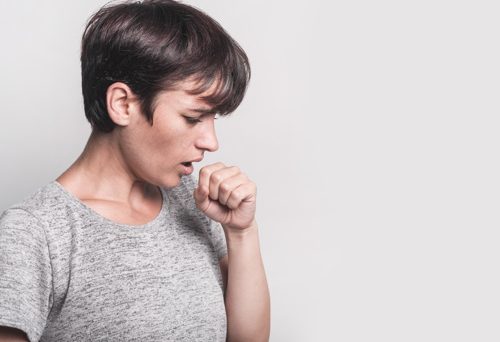Drug-resistant tuberculosis (TB RO) is a pulmonary infectious disease caused by Mycobacterium tuberculosis which has been resistant to TB drugs.TB Multidrug-resistant (MDR TB) is resistant to isoniazid (H) and rifampicin (R) which is an anti-tuberculosis drug. First-line anti-TB drugs include isoniazid (H), rifampin (R), pyrazinamide (Z), ethambutol (E), and streptomycin (S).
Indonesia is ranked 7th in the world for the number of RO TB cases in 2017 with 23,000 cases. RO TB cases in Indonesia came from 2.4% of new cases and 13% of cases of re-treatment. Drug resistance occurs when drug-sensitive TB patients receive inadequate treatment or drop out of treatment, causing mutations in Mycobacterium tuberculosis to become resistant to anti-TB drugs.
The acid-resistant bacillus (BTA) test is a simple test for diagnosis and monitoring of TB patient treatment outcomes. Patients with higher BTA counts indicate a high count of Mycobacterium tuberculosis and an increased likelihood of drug resistance. The level of resistance to H and R (the definition of MDR TB) is due to the mutation rate for H and R. Evolution of strains to MDR requires a population of at least 106 bacilli in infected individuals. The potential for drug resistance mutations varies for each drug, namely about 108 bacilli for R, 106 bacilli for H, S, and E. Clinicians assume that a higher amount of AFB has the potential to cause drug resistance.
This study was retrospective which aims to determine the pattern of drug resistance in MDR TB patients with AFB positive and to evaluate its relationship with the number of AFB. The research data were taken from all MDR TB patients at RSUD Dr. Soetomo from August 2009 to April 2018. The research data were taken from the BTA test data in the patient’s medical records. The findings of BTA were categorized into BTA 1+ (1-9 BTA per 100 fields of view), BTA 2+ (1-9 BTA per 10 fields of view), and BTA 3+ (1-9 BTA per field of view).
Patients with positive smear were tested for sensitivity to anti-TB drugs using MGIT 960 BACTEC to determine sensitivity to R, H, E, and S. BTA tests and drug sensitivity cultures were carried out at health laboratory center (BBLK) Surabaya which has been certified by WHO. The data from ]AFB and culture results were then analyzed using a Spearman test to determine the significance of AFB and the resistance pattern. The statistical test results are considered significant if the significance value is
There were 433 smear-positive sputum samples from MDR pulmonary TB patients. Resistance to RHES was found in 22 (14%) AFB 1+, 12 (9%) AFB 2+, and 13 (9%) AFB 3+. Resistance to RHE was found in 39 (25%) AFB 1+, 38 (29%) AFB 2+, and 35 (24%) AFB 3+. Resistance to RH was found in 74 (47%) AFB 1+, 61 (47%) AFB 2+, and 69 (47%) AFB 3+. Our results found that there was no significant relationship between the amount of AFB and the pattern of first-line anti-TB drug resistance.
Author: Soedarsono Detailed information from this research can be seen in our writing at https://e-journal.unair.ac.id/IJTID/article/view/14294 eJ





